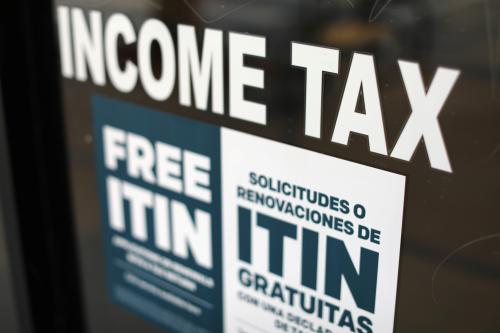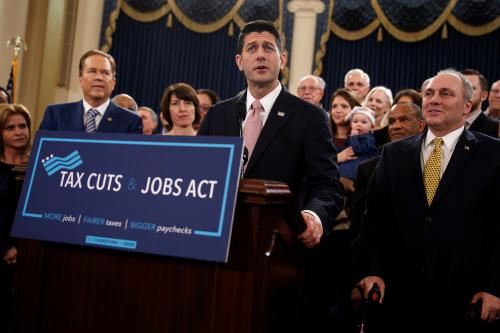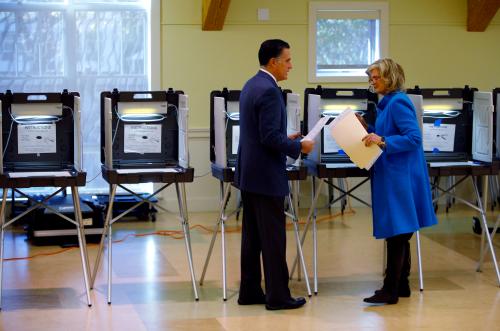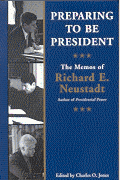The Trump Tax Agenda: A Gift to the Super-Rich
Just shy of the 100-day mark, the Trump Administration released a 233-word memo proposing major changes to federal tax policy. Promoted as a “tax plan,” the document has been criticized as “devoid of details,” “less a plan than a wish list,” and “something you might see as a first draft of a campaign white paper.”
As a policy document, the Trump Administration plan is a small step above scrawling “more money for rich people” on a cocktail napkin.
Let’s be real. As a policy document, the Trump Administration plan is a small step above scrawling “more money for rich people” on a cocktail napkin. Actually, that napkin would have the advantage of honesty; the Trump memo repeatedly claims the goal of helping middle-class families, and then presents a deficit-exploding set of handouts to the wealthiest people in America.
Nonetheless, some of the proposals included in it are likely to appear in tax bills debated by the Republican Congress. So here’s what you need to know.
It’s an enormous tax cut for rich people (and specifically, President Donald J. Trump).
Despite early promises from Treasury Secretary Mnuchin, the tax plan is a very large tax cut for the wealthy. Basically all of the measures described in any specificity in the memo are tax cuts at the top.
First, Trump would lower the top marginal rate from 39.6 percent, which currently applies to income over $470,000 for a married couple, to 35 percent. (Bizarrely, the Trump Administration could not answer where the new brackets they propose would kick in, but in any case, the new rates are lower at the top.)
Second, the Trump tax memo calls for the elimination of the Alternative Minimum Tax, a policy intended to keep very wealthy Americans from using special provisions to drop their tax responsibilities to near zero. As I noted a few weeks ago, without the AMT, Donald Trump would have paid an effective income tax rate of a mere 3 percent in 2005.
Third, the Trump Administration is seeking the repeal of a 3.8 percent tax that helped pay for the Affordable Care Act, charged on investment income over $250,000 for a couple. This would serve the president’s dual goals of benefiting the wealthy in society while significantly weakening the fiscal solvency of Obamacare.
Fourth, there is the new 15 percent rate for “pass-through” income, described by one observer as the “loopholiest of loopholes” and by another as a gift to “people with creative accountants.” This policy would also be hugely beneficial to President Trump’s own businesses. (When Trump was running for president, he promised to eliminate the “carried interest loophole” that gives hedge fund executives an enormous special break on their taxes; he did not explain at the time that his solution would be to eliminate that loophole by putting an immensely larger loophole around it.)
Finally, it promises to repeal the estate tax, which affects no one but multimillionaires and billionaires, who would now be able to pass their wealth on to their heirs untaxed. Annually, less than five thousand households—about 0.2 percent of estates—end up owing estate taxes.
The net effect of these measures is highly regressive. The limitations of the Trump tax document makes a precise calculation impossible, but the outline resembles the Trump campaign tax plan, under which the wealthiest 1 percent of Americans received nearly half the benefits.
It’s an enormous, but vaguely described, tax cut for corporations.
According to the Trump memo, corporations should get an enormous tax reduction to 15 percent, a number substantially lower even than the 20 percent proposed by Representative Paul Ryan, and based on misleading claims that the U.S. business tax rate is “the highest in the world.” Beyond these two points, Trump’s memo devolves into vague generalities. The plan calls for moving to a “territorial tax system” with none of the necessary details to assess such a proposal; it mentions a “one-time tax” on trillions of dollars held overseas, but does not say at what rate that tax would be imposed; and it promises to “eliminate tax breaks for special interests,” with no clarity on what qualifies as a special interest.
It’s not good for anyone else.
While the super-rich clearly come out ahead, upper-middle-class people might actually end up paying more under the Trump plan, despite an increase in the standard deduction, if various deductions benefitting high earners were to be rolled back as the Trump memo implies. But the real cost to most Americans would not be at tax time; it would be in rising inequality, lost public investment and a weakened economy.
The Trump plan is dominated by large and top-heavy tax cuts which multiple studies have shown do not commonly encourage strong economic growth or job creation but do incentivize larger executive salaries and increase economic inequality. The idea that growth will be so great as to offset the cost of the tax cuts is widely discredited, the equivalent of “magic beans” or “fool’s gold.”
What the plan will undoubtedly do is knock an enormous hole in the budget. The Committee for a Responsible Federal Budget estimated that the Trump proposal would increase the deficit by $3 to $7 trillion dollars over the next ten years. These numbers are more or less in keeping with the Tax Policy Center’s 2016 assessment of the Trump campaign tax proposal.
Running up a huge deficit will put the squeeze on public spending. Huge tax cuts limit the options for public investments in scientific research, education, health, infrastructure, and other critical priorities. Already, the Wall Street Journal has featured an opinion piece calling for increasing the Social Security eligibility age to “offset revenue loss from Trump’s tax cuts.”
This is the real cost of the Trump tax cut to most families. On average, the middle 20 percent of earners are paying less than 3 percent of their incomes in federal income tax. (That might be why “tax relief” is not a priority for most Americans; only 11 percent of Americans rate the amount the pay in taxes as the thing that bothers them most about taxes. That is compared to 57 percent of people who were bothered most by the idea that wealthy people don’t pay their fair share.)
Instead of a small tax break, most Americans would benefit vastly more from new public investments in education, health care, and housing, all of which have become vastly more expensive in recent decades. Handouts to those at the top mean those investments will be much harder to afford.
The Trump Administration’s 100 Days of tax policy amounts to a single memo, but it tells us almost everything we need to know. It is both lazy and uninformed, with a veneer of generalities regarding aid to the middle class and policy specifics that would personally enrich the president.










Commentary
The Trump tax agenda: A gift to the super-rich
May 4, 2017